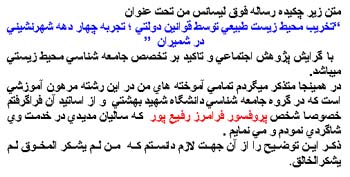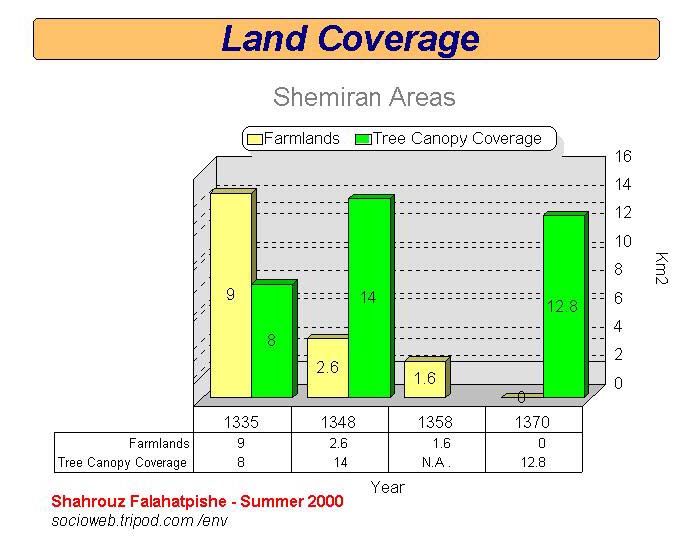- Introduction
1-1. Subject importance
1-2. Objects
- Theoretical framework
2-1. Problem definition
2-2. The role of sociology in consideration of environmental problems
2-2-1. Environmental sociology
2-2-1-1. Affective factors in environmental degradation
2-2-1-1-1. Ecological explanation
2-2-1-1-1-1. POET model
2-2-1-1-1-2. IPAT model
2-2-1-1-2. Political economy explanation
2-3. Urbanization and environmental degradation
2-3-1. Urban policy
2-3-2. Real state market and urban economy
2-3-2-1. Land directed development
2-3-3. The most regular form in expanding urban areas
2-4. The role of government in environmental protection
2-4-1. Political obligations in environmental protection
2-4-1-1. Need to knowledge
2-4-1-2. Need to an ethical approach
2-4-1-2-1. New environmental paradigm
2-4-1-2-2. Land ethic
2-5. Discussion brief
2-5-1. Causal network in present research
- Research method
3-1. Proving degradation
3-1-1. Limiting the area
3-1-2. Regulations to determine the area
3-1-2-1. Use the map of area
3-1-2-2. Use the regional aerial photos
3-1-3. Measurement of environmental degradation
3-1-3-1. Land history
3-1-3-1-1. Related organizations data
3-1-3-1-2. Satellite pictures
3-1-3-1-3. Aerial photos
3-1-3-2. Regulations to determine the time periods
3-1-3-3. Instrument to measure degradation
3-1-3-3-1. Use of AutoCAD software
3-1-3-3-2. Preparing green maps
3-1-3-3-3. Preparing digitized maps
3-1-3-3-4. Calculating the scope of degradation
3-1-3-3-5. Transforming the calculated figures to real figures
3-2. Evaluating the governmental rules
3-2-1. Review the urbanity rules
3-2-1-1. Documents studies
3-2-1-2. Consolation with urbanity specialists
3-3. Public opinion about the problem
3-3-1. Degradation measurement and affective factors
3-3-1-1. Degradation measurement
3-3-1-2. The role of ecological limitation in degradation possibility
3-3-1-3. The role of urbanity rules in degradation possibility
3-3-1-4. Considerable variables in present research
3-3-1-4-1. Personal variables
3-3-1-4-2. Land use history
3-3-1-4-3. Dependent variable (degradation)
3-3-1-4-4. Ecological limitations
3-3-1-4-5. The role of government and governmental rules
3-3-2. Sample society
3-3-2-1. Regulations for choosing a responder
3-3-2-2. Regulations for choosing an area
3-3-3. Method of sampling
3-3-3-1. Quantity of sample
3-3-4. Adjusting the questionnaire
3-3-5. Choosing and training the interviewers
3-3-6. Pretest interview
3-3-7. Final interview
3-3-8. Data bringing out
- Findings
4-2. The role of governmental rules in degradation
4-2-3-3-4. Urban land rule after
1993
4-3-1. Frequency of personal variables





